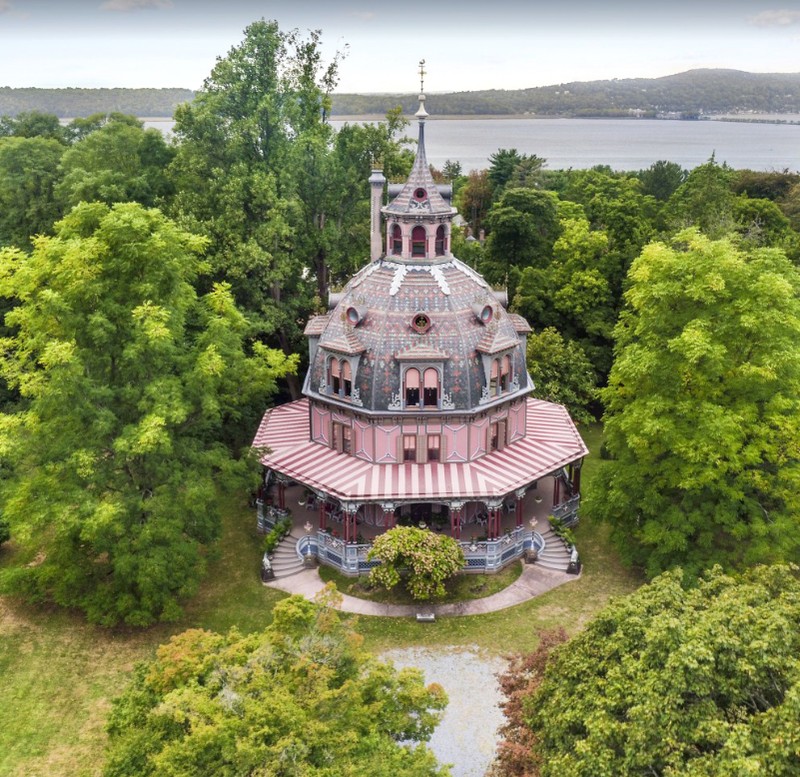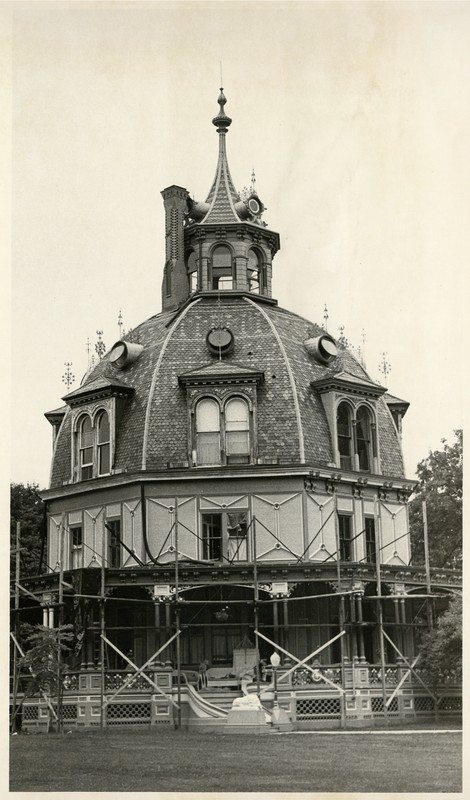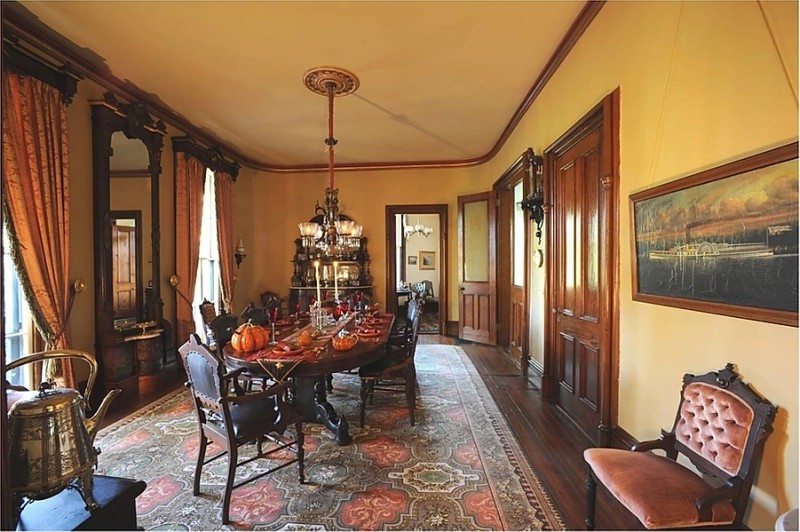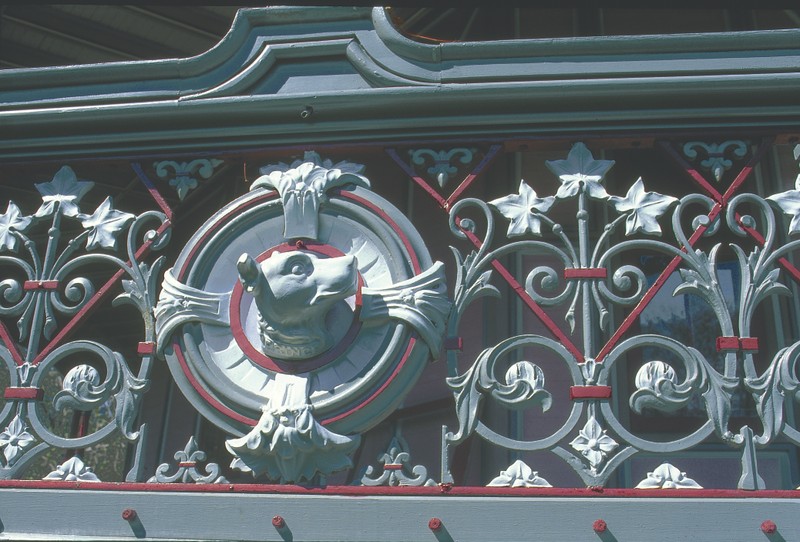The Armour-Stiner Octagon House
Introduction
Text-to-speech Audio
Images
The Armour-Stiner Octagon House

The Armour-Stiner Octagon House

Egyptian Revival Music Room

Dining Room

Ornamental Medallion on the Veranda Railing

Backstory and Context
Text-to-speech Audio
During the period in which it was built the popular style of the time was octagonal buildings. After Orson Squire Fowler published, A Home for All, many buildings were structured to mimic the style he wrote about. He wrote “Why continue to build in the same square form all past age?” “The octagon…incloses more space for its wall than the square, besides being more compact and available.”1 (Williams, 214) Fowler had absolutely no experience in architecture but that did not stop him from writing his book, it was the inspiration behind many structures including barns, churches, schools and libraries.
Paul J. Amour, was a New York City financier when he built his simpler version his home in 1860. He was a very interested in phrenology. Phrenology was pseudoscience that was widely embraced in the 1800s. It was argued that the brain was separated into many separate 'organs,' controlling mental functions.2 (Williams, 215) Interestingly, Gray Williams noted Fowler thought that his own skull was an example of a strong phrenological development of "Inhabitiveness" (attachment to one's home) and "Constructiveness" (skill in building), making him the best authority of designing structures.
Joseph Stiner, wealthy tea importer purchased the home and transformed it into the design that as it appears today. He added a two-story dome and a soaring cupola which more than doubled the height of the building. Also, Stiner also added many elaborate elements to the structure like the paired columns of the surrounding veranda to the wrought-iron cresting on the dome and cupola. 3 (Williams, 214) He even had the exterior painted in ten different colors to emphasize the ornamentation place around the structure.
There were several more occupants in the home following Stiner and the best known occupant was Carl Carmer. Carmer began living in the home from in 1940. He was an author, poet, and historian, and he lived in the home until his death in 1976. His legacy includes tales of a residential ghost. The house was included in some of his written work. Shortly after Cramer's death the home was acquired by the National Trust for Historic Preservation to save in from demolition. In need of stabilization and conservation, it was the first house to be acquired by the National Trust and then resold to a private citizen, Joseph Pell Lombardi. 4(https://www.armourstiner.com/)
Joseph Pell Lombardi is a preservation architect specializing in conservation, restoration, and historic preservation throughout the world. Under the direction of his son Micheal Hall Lombardi, they have managed to restore work throughout the house including the Egyptian Revival Room, Basement, Kitchen, Greenhouse and Studio and much of the decorative surfaces. 5(https://www.armourstiner.com/) The house and grounds has been restored to it 1872 appearance and the interior of the home is the best display of American Neo-Roman style popular during a brief period in the 3rd quarter in the 19th century. 6(https://www.armourstiner.com/)
Tours are available by appointment.
Sources
Williams, Gray . Picturing Our Past: National Register Sites in Westchester County. Elmsford, NY. Westchester County Historical Society, 2003.
Octagon House, Friends of the Old Croton Aqueduct. Accessed April 17th 2020. https://aqueduct.org/octagon-house.
The Armour-Stiner Octagon House , Accessed April 17th 2020. https://www.armourstiner.com/.
https://aqueduct.org/octagon-house
Westchester County Historical Society
https://aqueduct.org/octagon-house
https://aqueduct.org/octagon-house
Westchester County Historical Society
